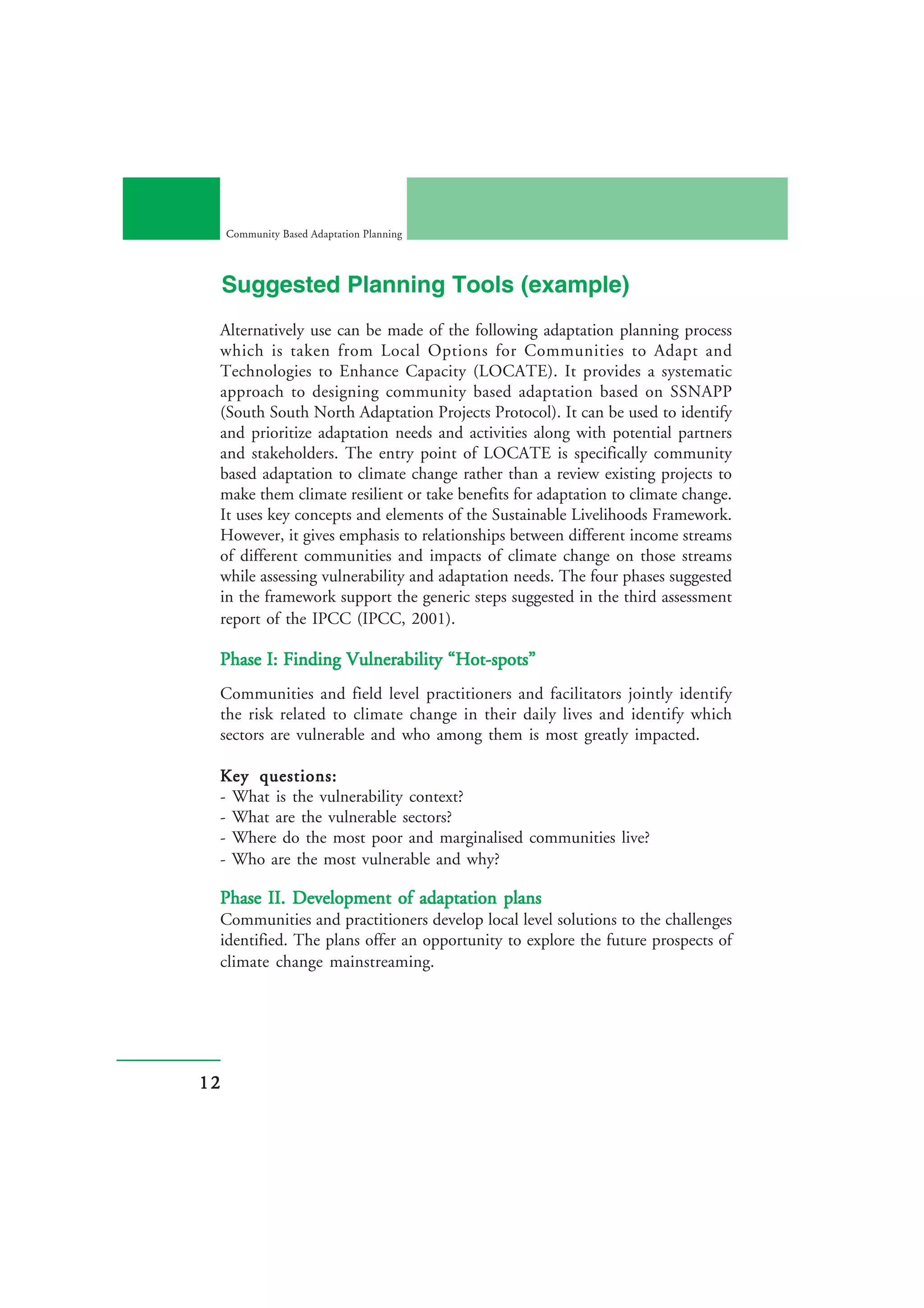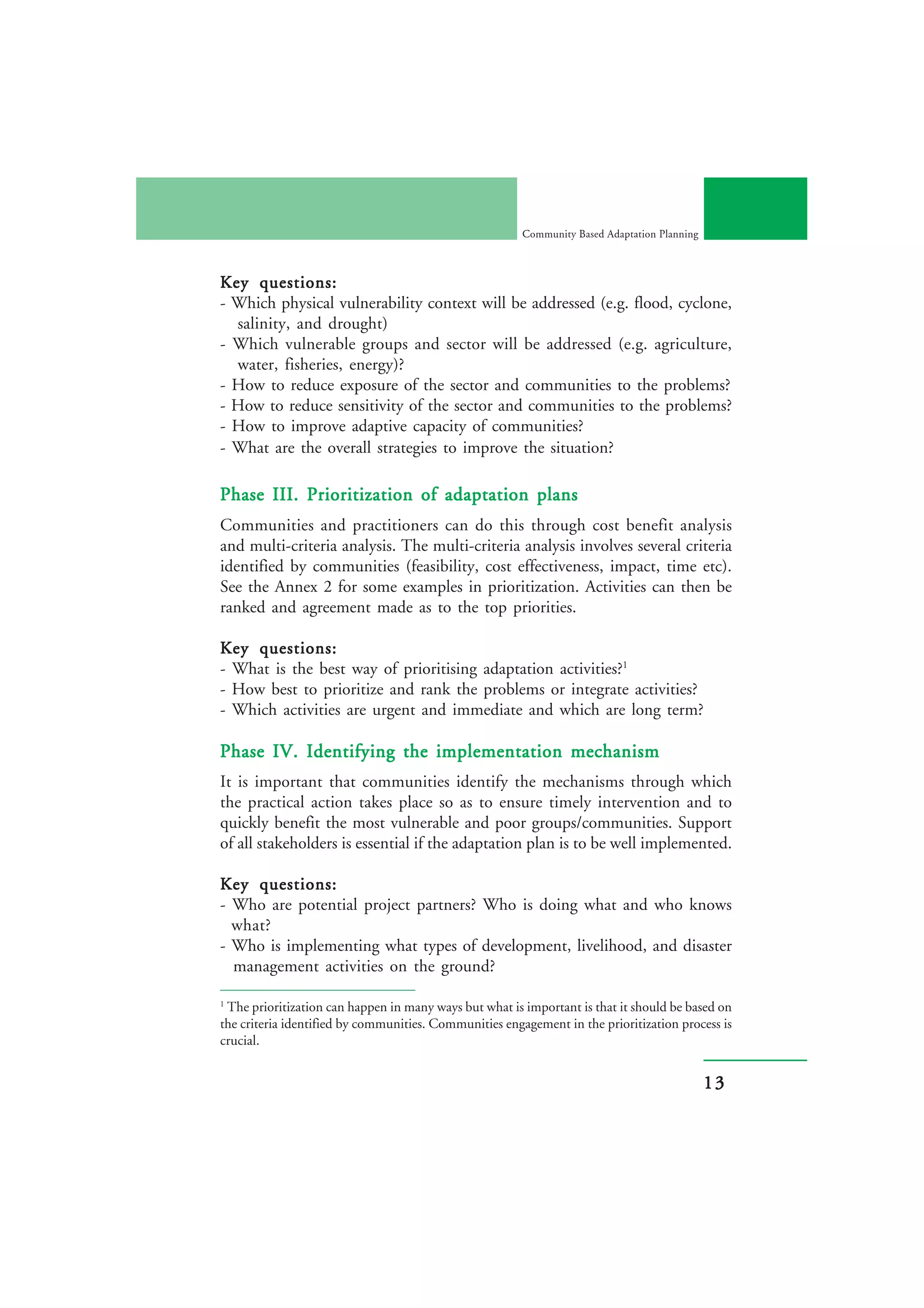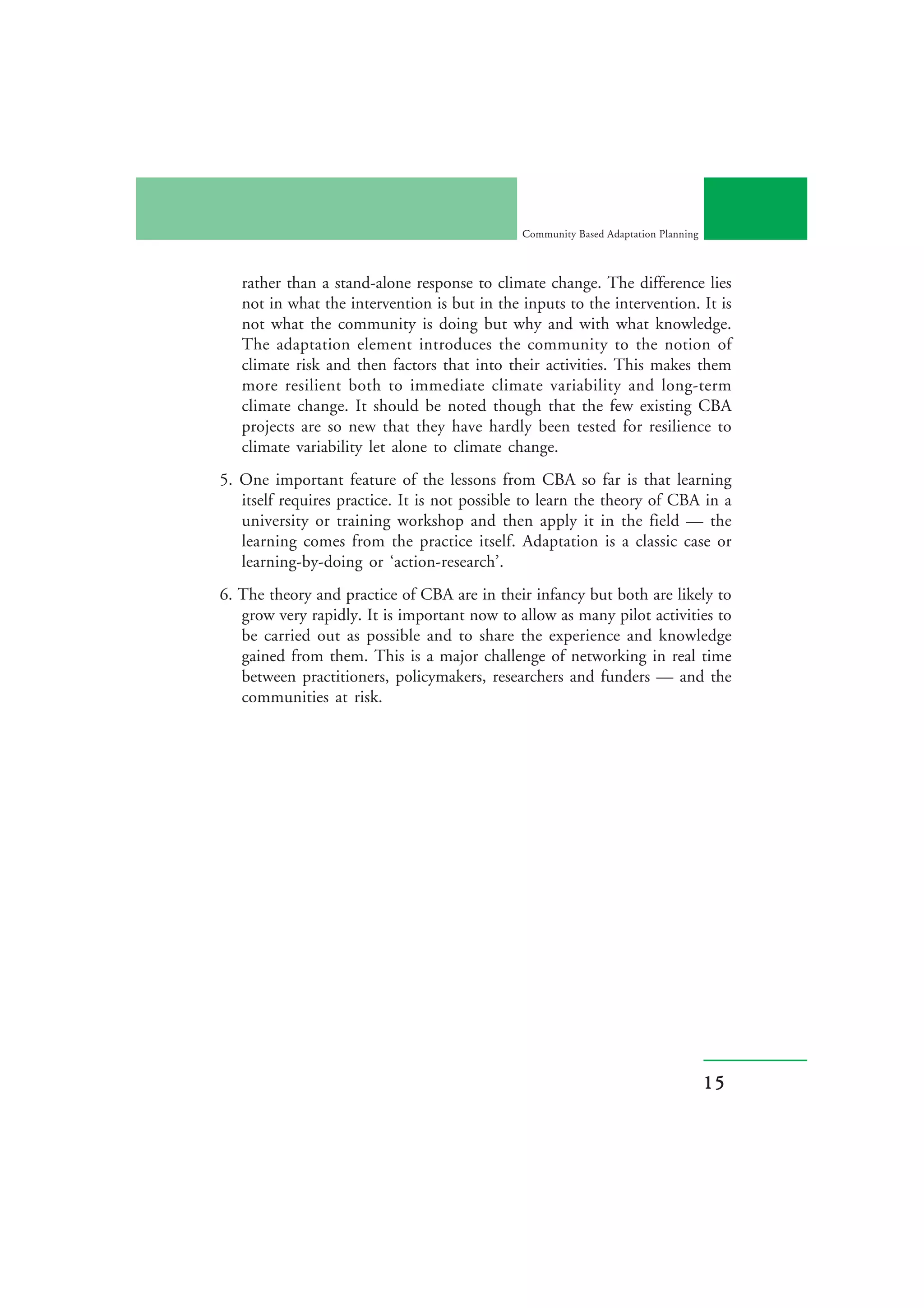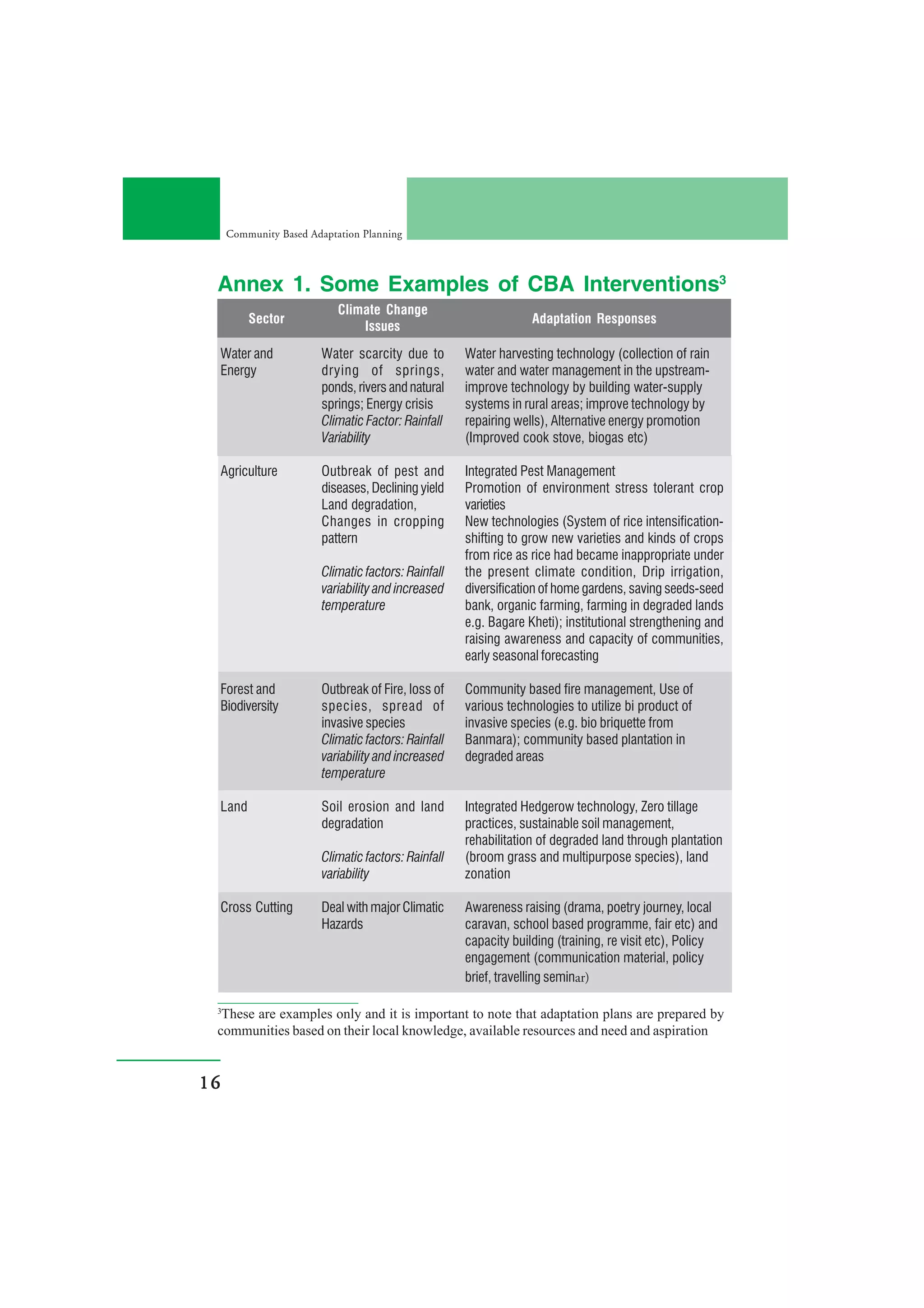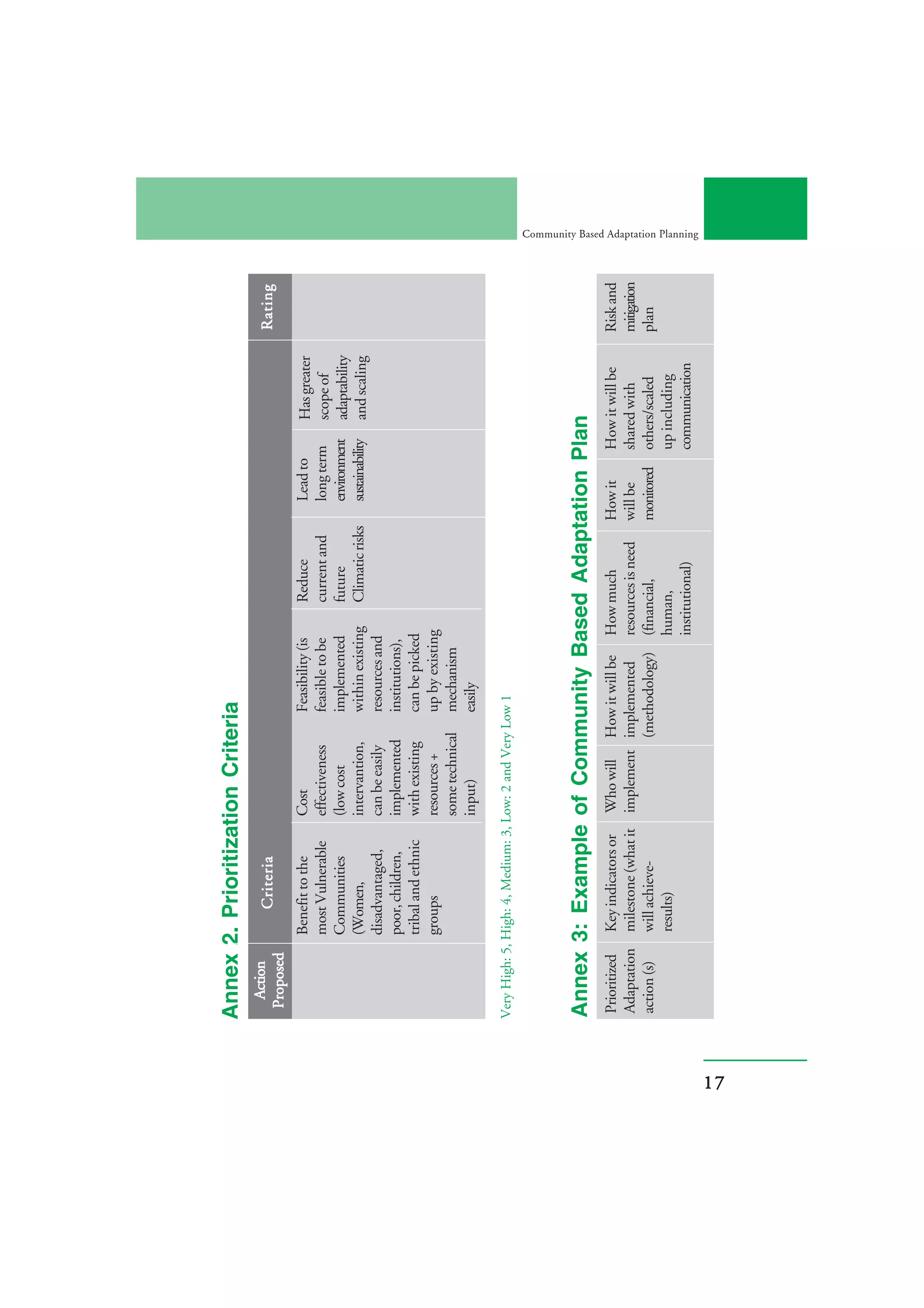The document discusses community-based adaptation planning for climate change. It provides background on the need to help vulnerable communities adapt to climate impacts. The key concepts covered include defining adaptation, different types of adaptation (anticipatory, autonomous, planned, etc.), and different types of adaptation plans (NAPAs, LAPAs, CBAPs). It then discusses guiding principles of good adaptation planning and outlines a process for developing community-based adaptation policies and plans through vulnerability and risk assessment, identifying adaptation options, and developing an action plan. Tools are suggested for each step of the planning process.
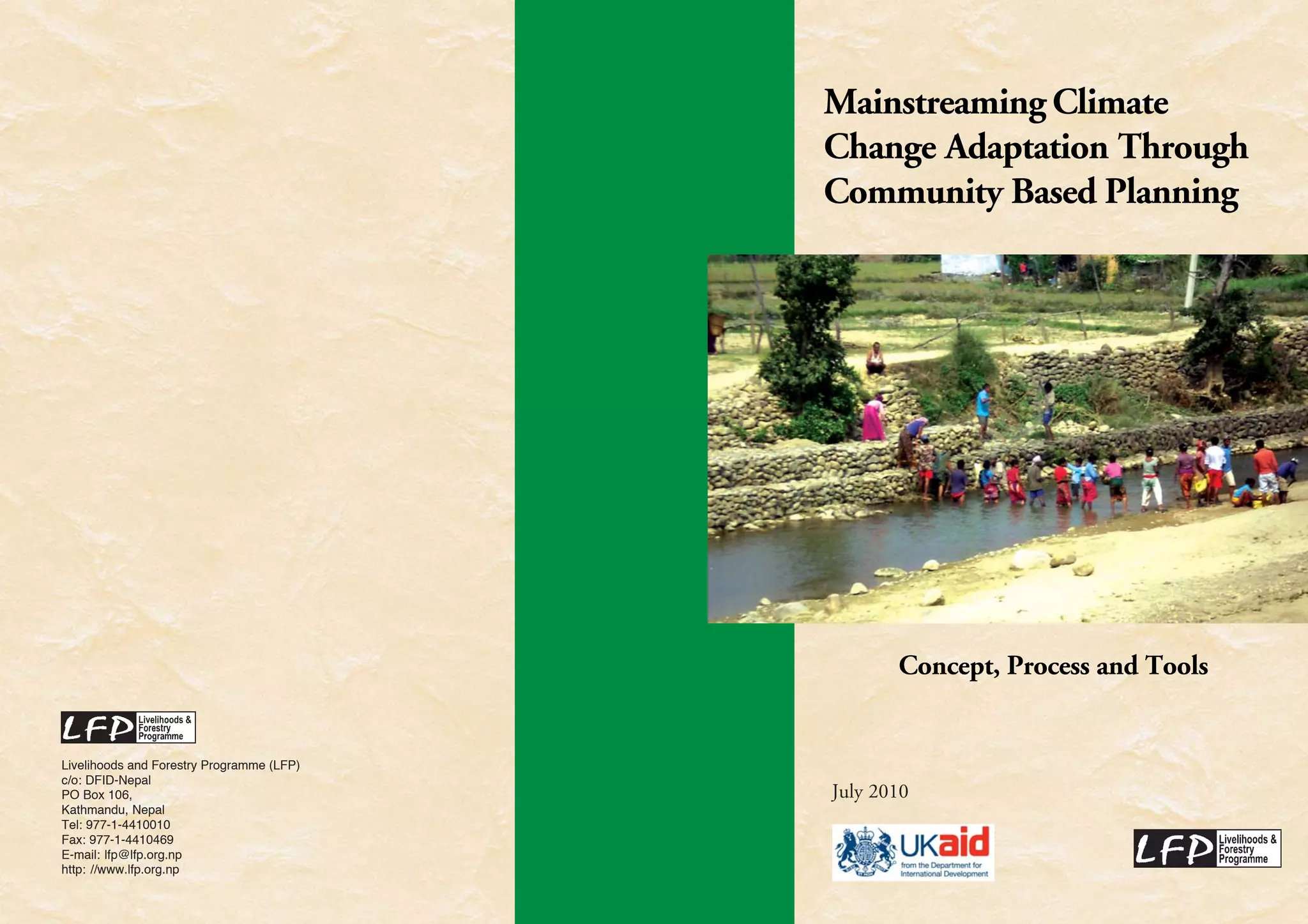
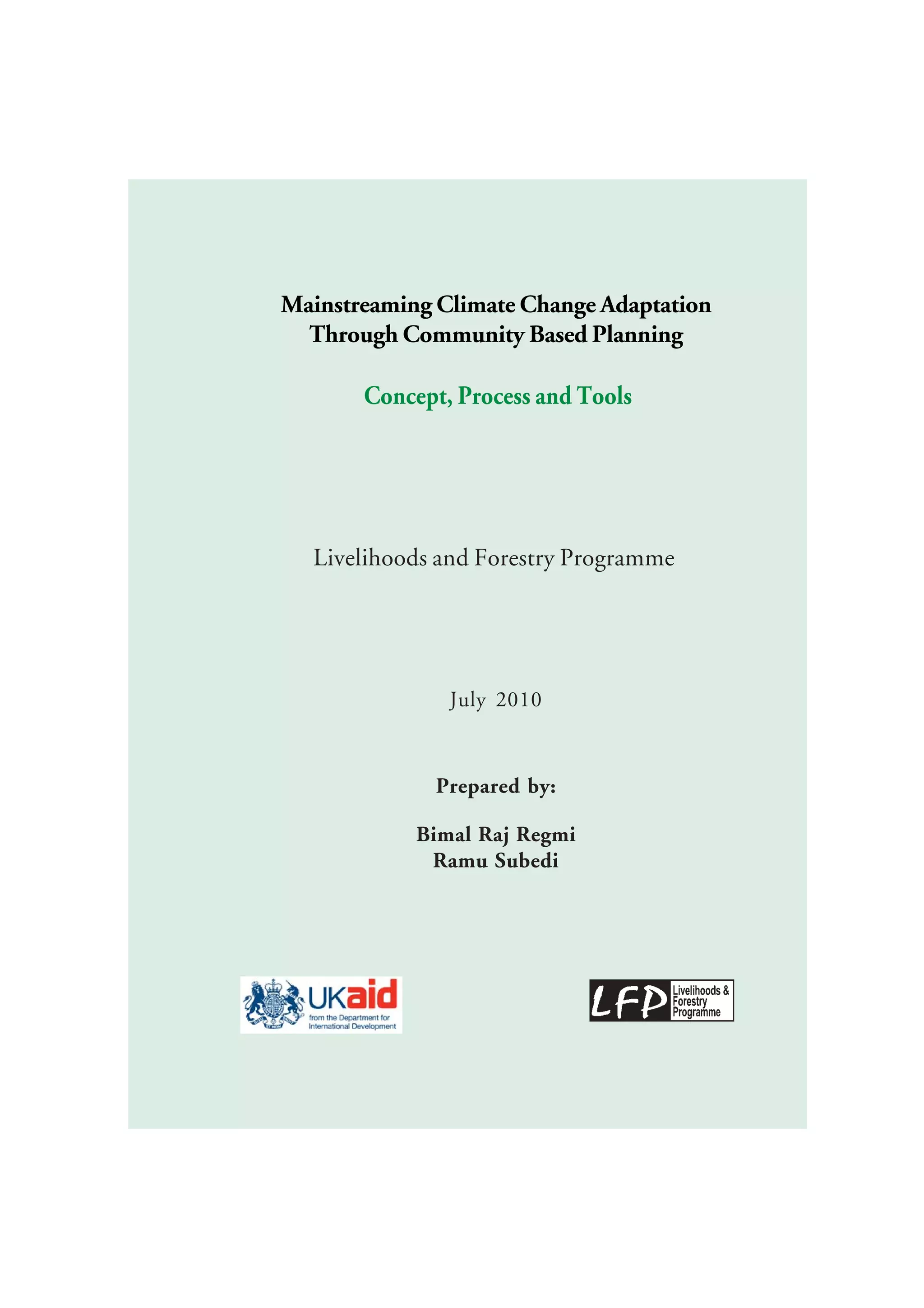
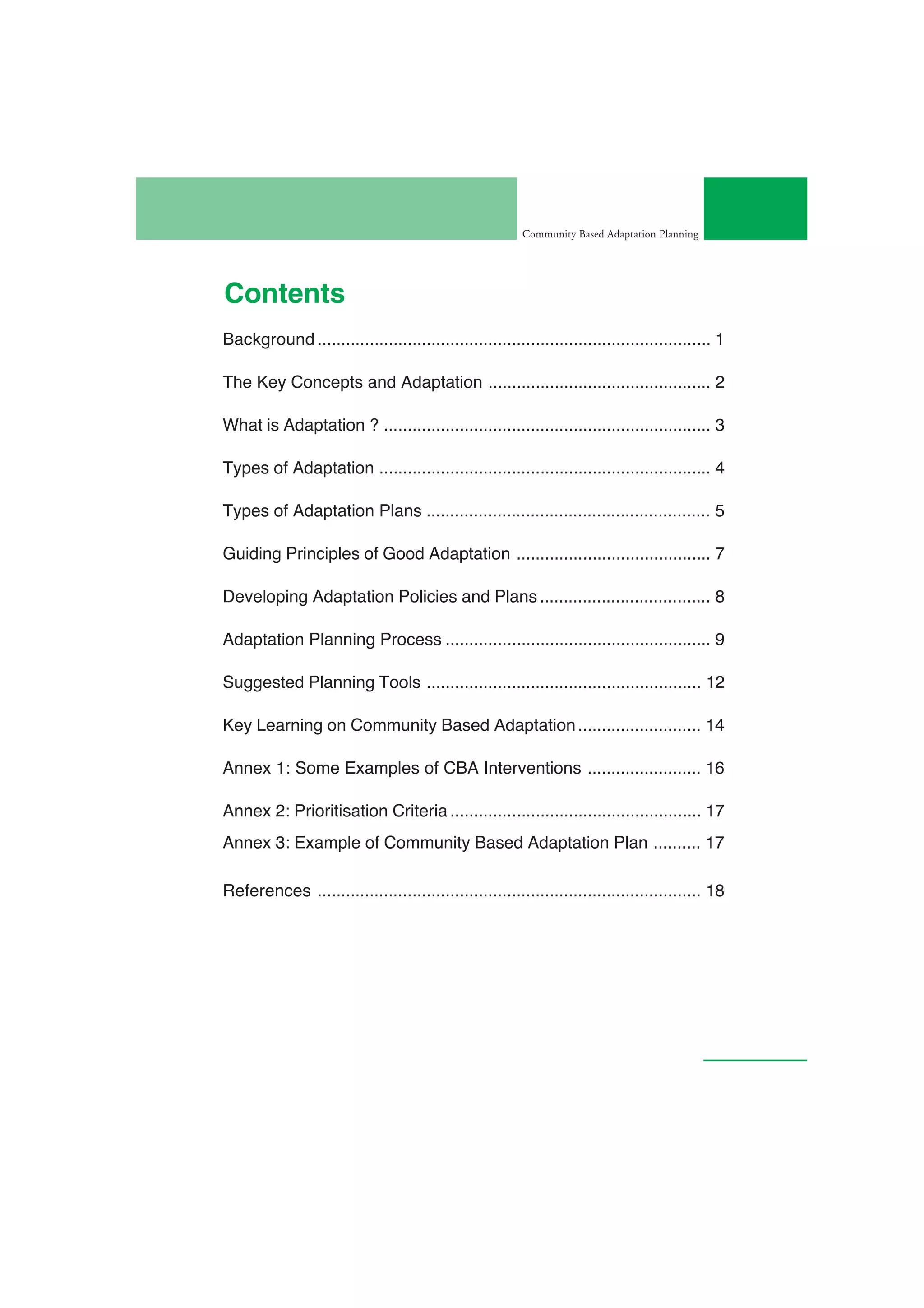
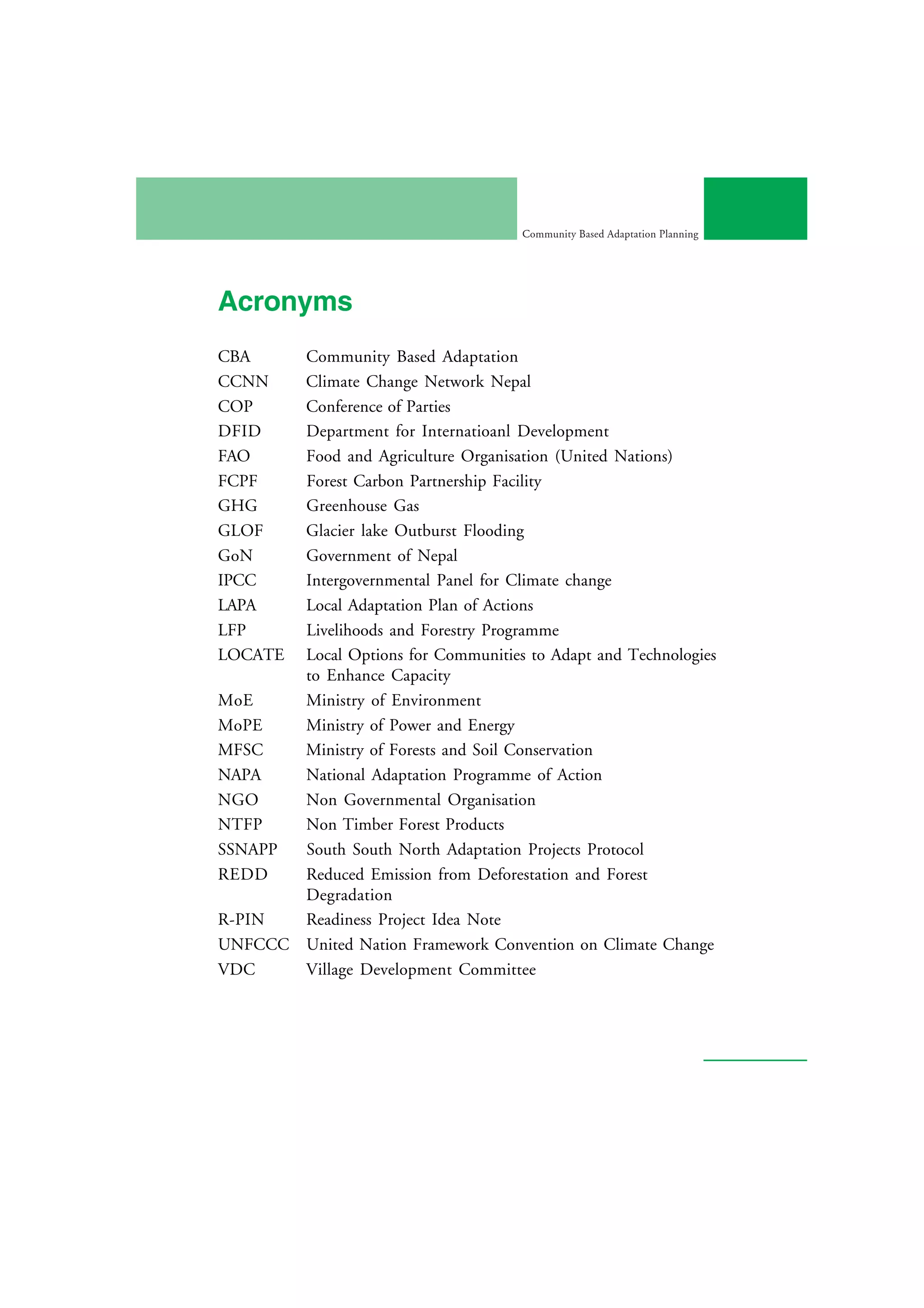
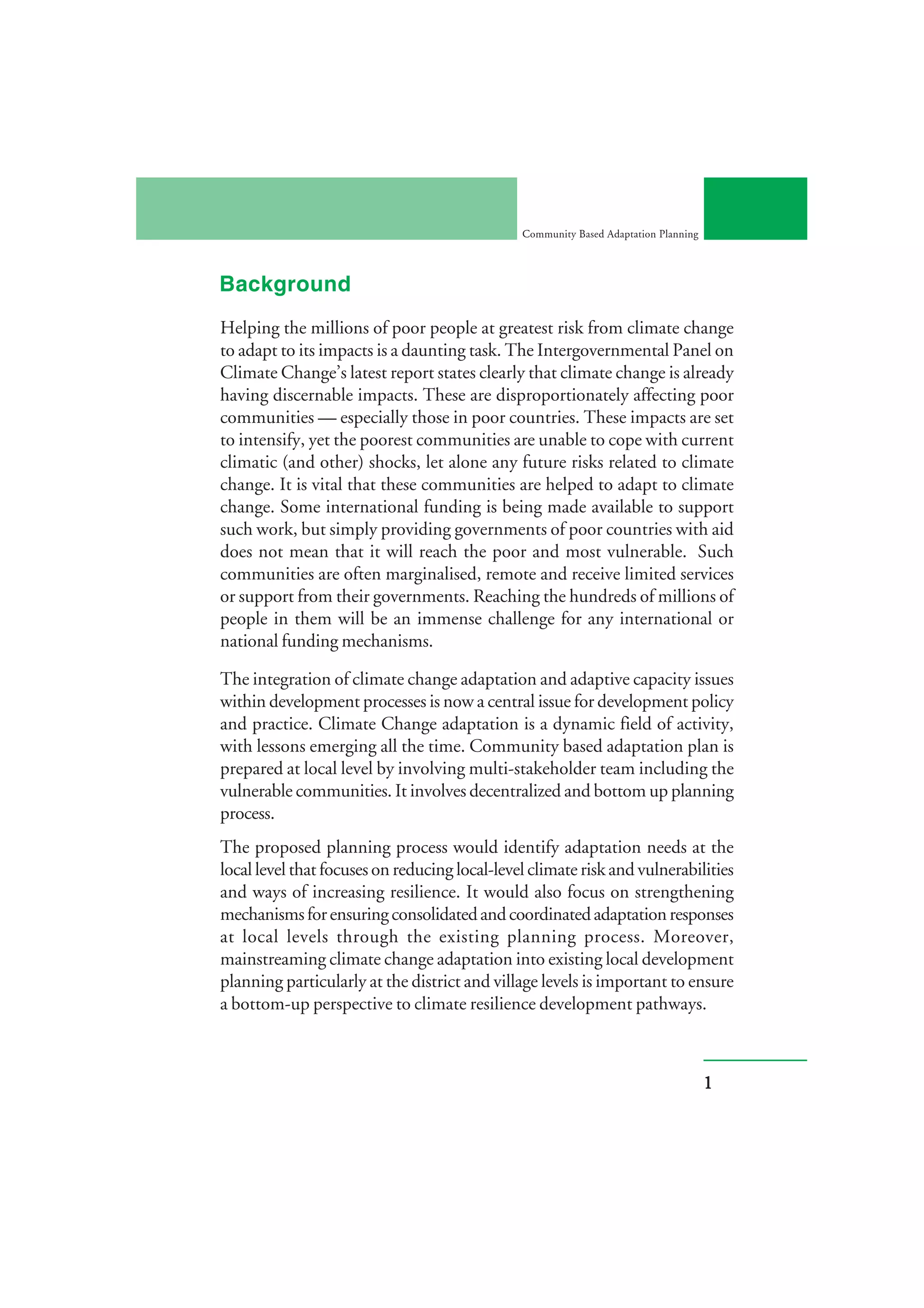
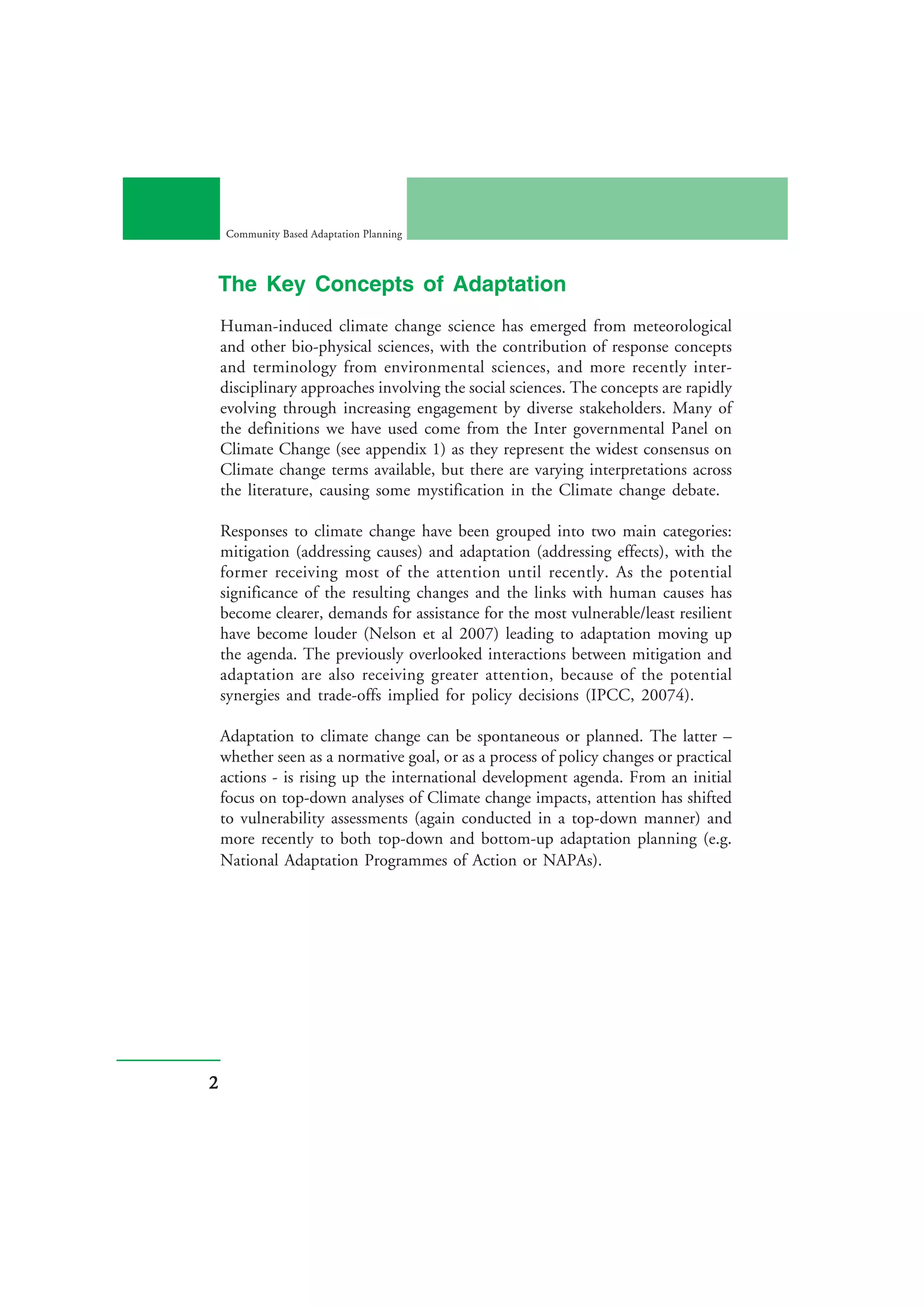

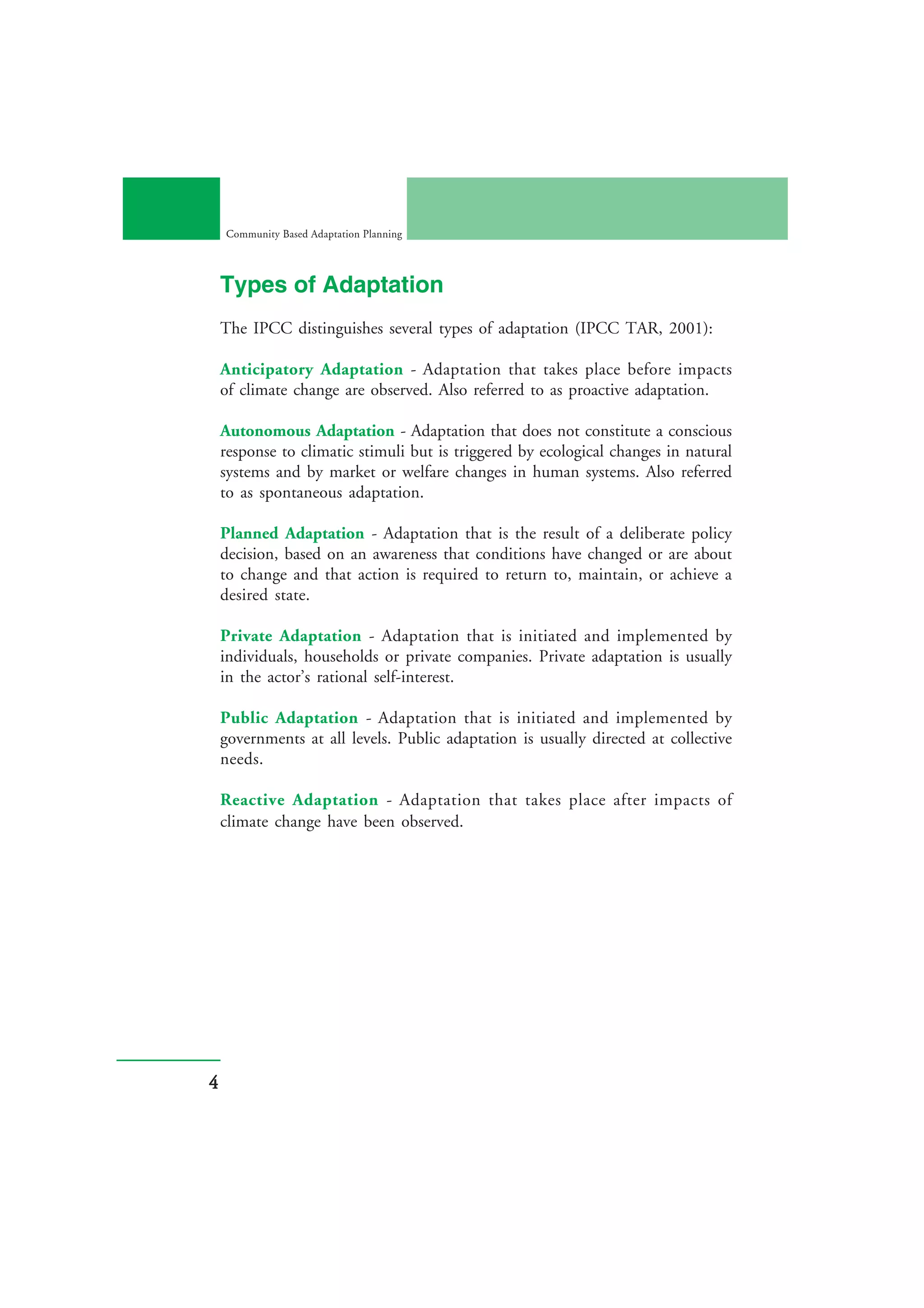
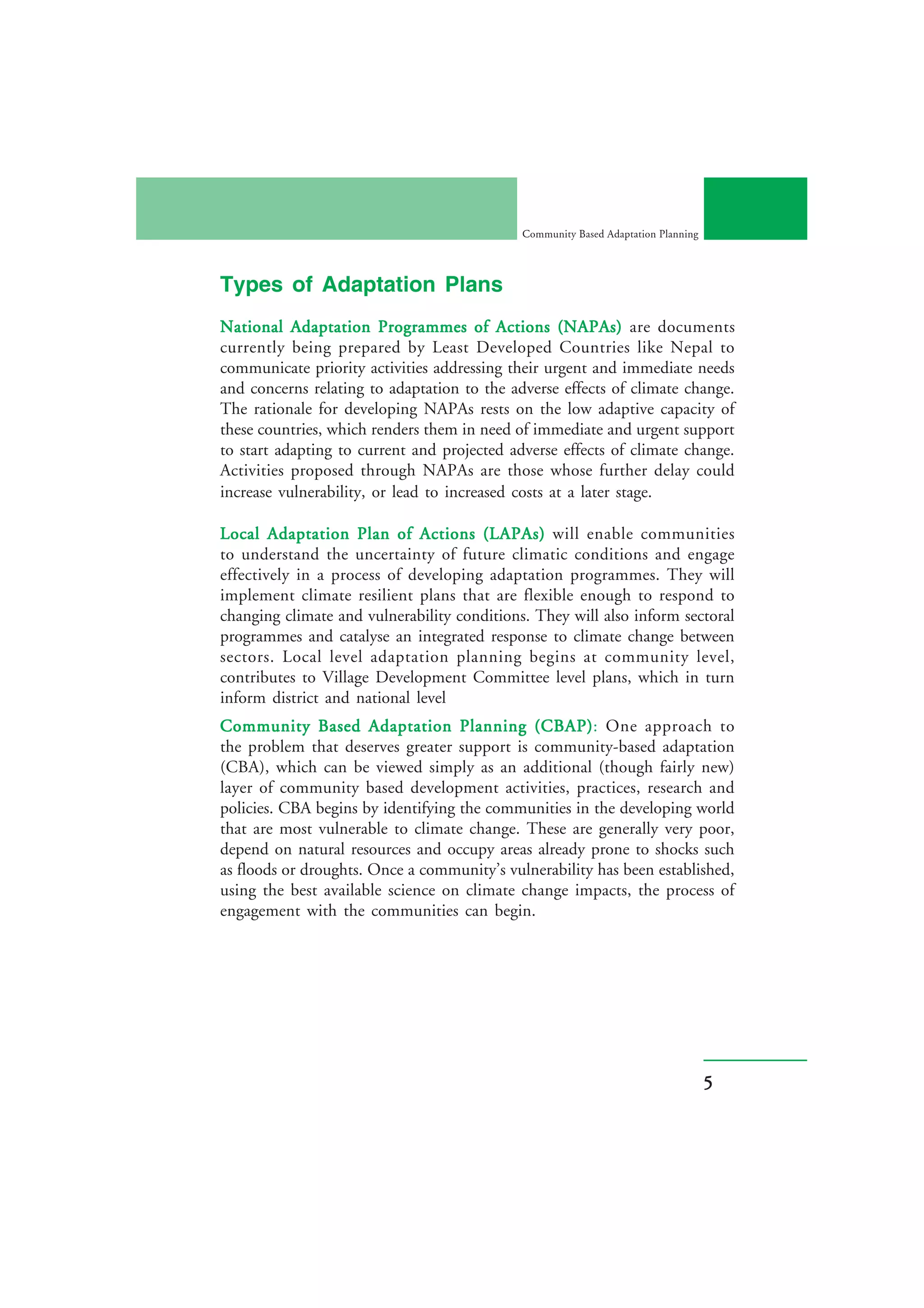
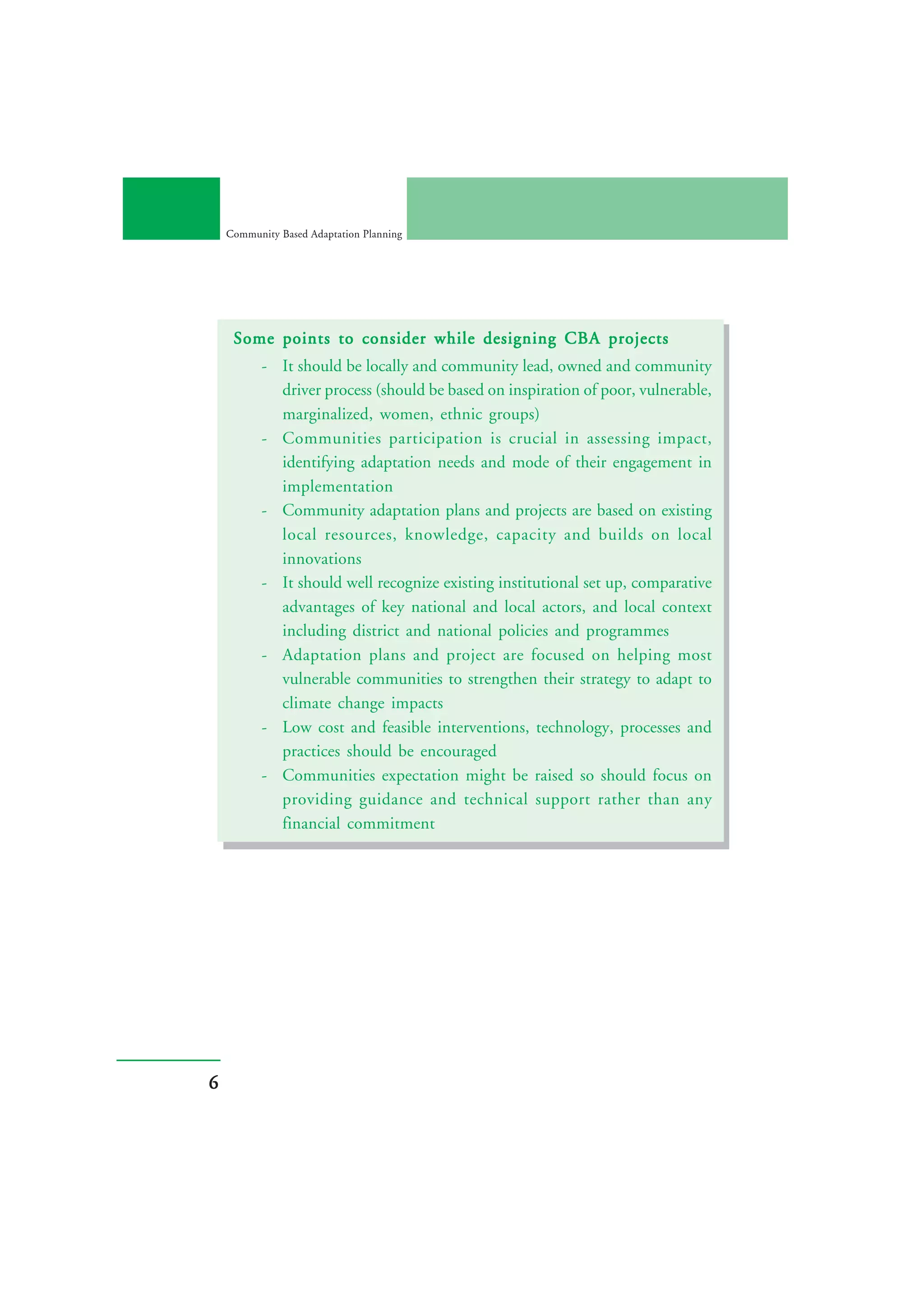
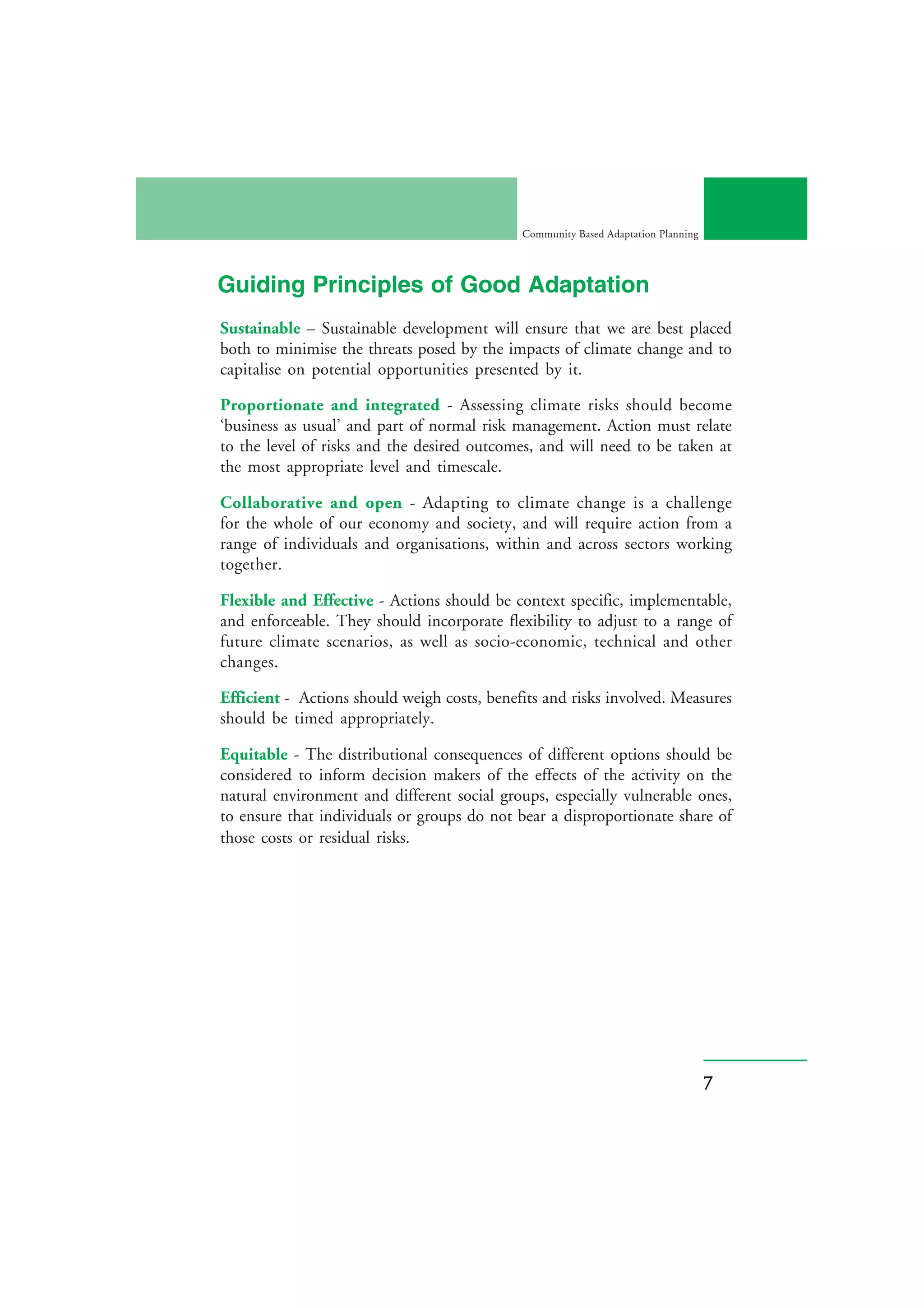

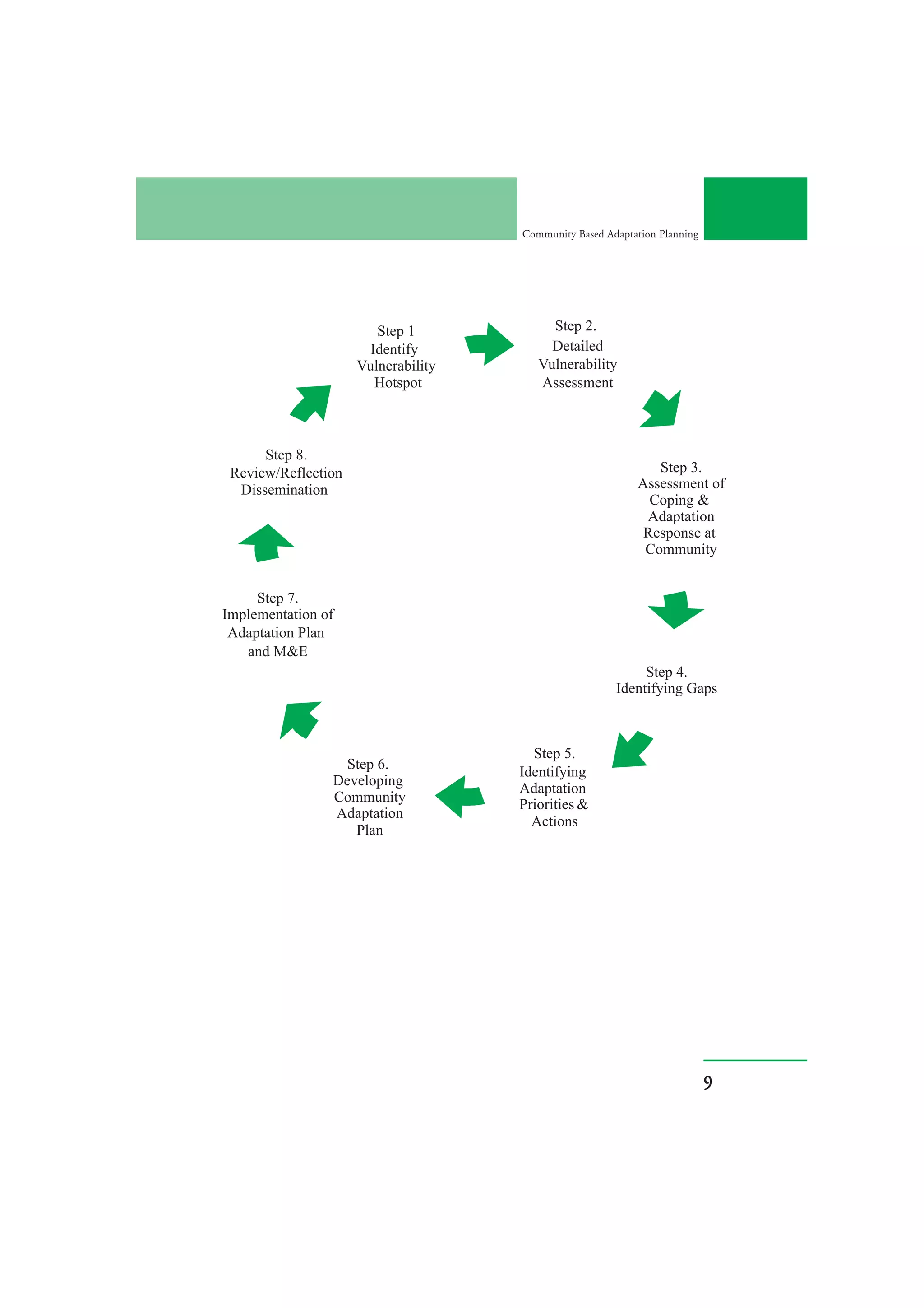
![Community Based Adaptation Planning
Adaptation Planning Process
Whether working at district, VDC or community level the preparation of
adaptation plans is often the most important aspects of adaptation processes.
It can lead to an effective participatory planning process as suggested below:
1. Identify the hazards and asses the risk of them happening [can use tools
(hazard ranking), (trend analysis), (hazard mapping).]
- List down the risk and hazard occurring in the area
- Identify climate related hazards and risk in the areas
2. Asses the impacts of those hazards [can use tools (hazard
impactassessment), (livelihoods resource assessment) with (livelihoods
vulnerability assessment), (hazard impacts on livelihoods).]
- Identify the impact of climatic hazards on livelihood resources
- Assess the degree of impact and its implications
3. Prioritise hazards based on severity of impact and vulnerability of resources
and people [can use tools (hazard ranking), (vulnerability assessment),
(vulnerability matrix).]
- Which among the climatic hazards are significant and pose major
threat
- Which groups are more vulnerable in terms of impacts (women,
children, old, ethnic, disadvantaged) and in which area/village or
which category of users
4. Identify and assess existing capacity/assets to cope with and adapt to
existing and future hazards [can use tools (livelihoods resource
assessment), (coping and adaptation strategies assessment), (effectiveness
of coping and adaptation strategies).]
- What are the existing local knowledge, practices and mechanism
to cope and address climatic risk and hazard
- How effective are those responses?
5. Identify the critical gaps by analysizing degree of impact and effectiveness
of responses.
10](https://image.slidesharecdn.com/tr74-adaptationccplanningeng-100903130920-phpapp01/75/Tr-74-adaptation-ccplanning-eng-14-2048.jpg)
![Community Based Adaptation Planning
- Assess the degree of impact and effectiveness of responses
- Are the responses sufficient to deal with climate change impacts
- What are the critical gaps?
6. Assess how existing resources can be used to fill the gaps and list actions
[can use tool (livelihoods resource assessment).]
- What are the opportunities to fill the gaps (institutional innovations,
livelihood resources/assets, existing fund, mechanism, technology,
local practices, innovations etc)
7. Assess how remaining gaps can be filled by external partnerships [can use
tool (adaptation partnership mapping).
- List down the existing institutions and their key strength and
weaknesses
- Assess the capacity of institutional responses to deal with climate
change impacts (which institution can play what role)
8. Prepare a plan of action based on prioritized risk of hazards, detailing
actions that can be taken at community, VDC or district level and the
available external support. The plan should be very specific about what
will be done, where, when and by whom (Specific details is presented
in the following session).
- What are the urgent/immediate, short term and long term actions
to deal with climatic hazards and impacts (this should be based on
using certain criteria identified by users or farmers on what do they
mean by urgent or immediate)
- How to implement the identified action (resources needed, time,
who will be engaged, what kind of institutional collaboration, who
implements, who monitors and how)
11](https://image.slidesharecdn.com/tr74-adaptationccplanningeng-100903130920-phpapp01/75/Tr-74-adaptation-ccplanning-eng-15-2048.jpg)
